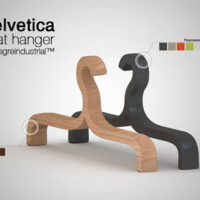The Google Translate app for Android can translate live speech and offer a translation. The Babel fish approacheth.
Month: January 2011
Online news in 1981
From an old news report — it used to take about two hours to download an electronic newspaper with connections fees of five dollars per hour. Oh, and the newspapers weren’t in it to make a profit.
Heart equation
Mathematicians may be cold and lifeless, but definitely not heartless — there’s proof.
Tree of Codes
A set of photos from Jonathan Safran Foer’s Tree of Codes.
Knowing sushi
If You Knew Sushi examines the world’s biggest seafood market, where a bluefin tuna can fetch the price of a small home. Japanese fish buyers have a finely honed craft.
“I tell you, Nicky, these Japanese guys, they take a little, thin slice from the tail, hold it to the light, look at it for a minute, then make an offer. God knows what they see.”
What the Japanese buying agent determines by his quick and practiced analysis of that sliver of tail is an indication of the tuna’s inner color, its oil content, and the presence, if any, of parasitic disease. A smooth-grained and marbled tail is a prime indication of quality. The richness of the tuna’s lipid content, its fat, can be gauged by how slippery the slice of tail feels between the fingers. Pockmarks reveal parasites. It’s a complex diagnostic method that is mastered only with years of practice. The overall form and color of the tuna are also quickly assessed at the same time. The ideal of these qualities, inner and outer—the word for this ideal is kata—is also a bit of a mystery to outsiders.
Duelling cellos Smooth Criminal
http://youtu.be/OlVbEclPj4c
Stjepan Hauser and Luka Sulic playing Smooth Criminal by Michael Jackson. That is all.
They embrace solitude
Jennifer B. Kahnweiler writes about why introverts can make the best leaders. The five key characteristics of introverted leaders that help them succeed:
- They think first, talk later
- They focus on depth
- They exude calm
- They let their fingers do the talking
- They embrace solitude
Selling old typefaces
An interesting thread on Typophile concerning whether or not you can digitize and old font and sell it by its old name. The thread devolves in true internet fashion, but worth taking a read through if you’ve ever considered remaking an old typeface.
Helvetica hanger by Alegre Industrial.
Bottom up draft beer
GrinOn has developed a method for dispensing beer from the bottom, allowing the cup to be filled nine times faster. The post includes a video of them pouring fifty-six beers in sixty seconds.
The key is the use of a cup that features a hole at the bottom and small, circular magnet that rests over it. When placed on the system, the magnet is lifted up by the pressure-driven beer. The cup fills up until the weight of the liquid pushes the magnet back down over the hole. The cup can then be lifted off and the beer consumed as normal.
MoMA adds typefaces to collection
The MoMA has added new typefaces to its permanent collection, including: OCR-A, FF Meta, FF DIN, Verdana and Gotham.
This first selection of 23 typefaces represent a new branch in our collection tree. They are all digital or designed with a foresight of the scope of the digital revolution, and they all significantly respond to the technological advancements occurring in the second half of the twentieth century. Each is a milestone in the history of typography.
The site lists all of the typefaces and the reasoning behind the selections.
Superficial scholars
Heather Wilson, who has served on Rhodes Scholarship selection committees, examines the lack of broader education from America’s top universities in Our superficial scholars.
I wish I could say that this is a single, anomalous group of students, but the trend is unmistakable. Our great universities seem to have redefined what it means to be an exceptional student. They are producing top students who have given very little thought to matters beyond their impressive grasp of an intense area of study. This narrowing has resulted in a curiously unprepared and superficial pre-professionalism.
Remember the lament for polymaths earlier this month?



